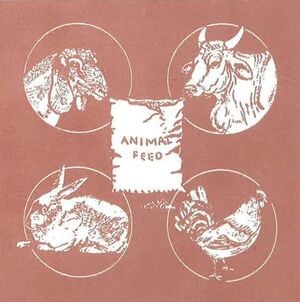
Chapter 1 - Economic background to the industry
Introduction[edit | edit source]
In the main, the demand for animal feeds is derived from the demand for animal products as human food, and the general pattern is that this demand rises in response to increases in income and population. However, it is difficult to gauge total demand; it cannot be estimated from published trade figures since many compound feeds and their ingredients are not imported into the developing countries on a large scale because of high transport costs, their bulk being great relative to their value. While there appears to have been a rapid rise in the production of compound feeds in many countries in recent years, it is likely that the potential market is much greater, and that there is considerable room for expansion of the industry.
The greater increase in demand for animal products comes from urban areas where families living above the subsistence level are concentrated; this demand may be sufficient to justify the setting up of integrated animal production and feed compounding enterprises. In general, therefore, demand for compound feed is associated with intensification of livestock production. However, any attempt to increase productivity through the production and use of compound feeds should be made as part of a wider programme including the development or introduction of appropriate breeds of animals with good genetic capacity and of husbandry and management methods. Effective diagnosis and control of infectious diseases is a vital component of livestock production and utilization of livestock products.
Since animal products can deteriorate rapidly, especially at higher temperatures, a further requirement for the expansion of animal production industries is an efficient and hygienic system for slaughtering and the distribution of animal products. This will often involve the expense of refrigerated transport and storage, together with the deployment of skilled management and labour as well as the availability of capital.
From the point of view of the supply of compound feeds, the principal cost to the manufacturer is that of raw materials, which amount to as much as 80% of operating costs in the models described later in the bulletin. Because of high transport costs the tendency will be to use locally available materials, even in locations with good access to external transport. Although many developing countries are food-deficit areas, the supply in some countries or areas is moving into surplus largely as a result of the introduction of new high-yielding crop varieties. Some of these countries are now seeking other market outlets for the products, in order, among other things, to avert the fall in price and consequent loss of income to producers likely to be caused by a change in the market situation.
Compound feed mills may be linked to a source of raw materials, such as a wheat mill or oilseed crushing plant; to a market outlet, such as a poultry or dairy enterprise; or they may be independent. Traditionally the feed industry has been linked to the supply of the raw materials, as these were generally the by-products of other processes and of low value relative to the main product. However, certain factors have now caused a movement towards market orientation. In the first place, mainly as a result of advances in nutritional science made by enterprises controlling the raw materials, their value has improved to a very great degree. At the same time nutritional knowledge has become more widespread, so that the demand for by products has increased and their prices have risen, thereby reducing the advantages of supply orientation. Secondly, since the distribution system in developing countries is often poor, and since feeds are usually made for particular markets, sales advantages are likely to be gained from market proximity. This will also have the effect of reducing the size of feed mills compared to those in developed countries, which is reflected in the emphasis on small-scale mills in this bulletin.
Why balanced feeds?[edit | edit source]
Animal production has been taking place over a long time, with the availability of compound feed being only a relatively recent innovation. Most livestock will grow on feeding systems consisting of a small range of components, or even a single component, but production levels may be low and if the nutrient levels in the feed are not balanced, wastage of those present in excess will occur. In general, feeding costs make up 7580% of the total costs of livestock production, and monitoring and close control of this aspect is essential for profitable projects. Studies on the composition of raw materials and the formulation of feed are aimed at producing a balanced feed. This is a feed which is designed to provide the animals' daily requirement of all known nutrients, and no more, and is intended to obtain maximum levels of production with minimum wastage of nutrients and at minimum feasible cost.
For intensively kept poultry or pigs, compound feed may be the only source of feed and must therefore be balanced. In some cases, for example, dairy cattle, compound feed may be a supplement to other feeds such as forages and roughages, and in this case it should be formulated in such a way that the complete ration will be balanced.
The manufacture of compound feed is therefore a service industry, in that the end product contains only those components added in the raw materials, or as supplements and additives. It must be kept in mind therefore that the cost of production and distribution of compound feed must not exceed the increase in value of animal production from balanced feeds compared with that from unbalanced or single component feeds. If it does, then it is not providing a useful service. While it may be difficult to quantify the differences in production levels and hence the acceptable cost of compound feed production, consideration of this point emphasizes the importance of taking all possible steps to ensure optimal formulation, adequate quality control, and minimization of equipment and operating costs at all stages.
